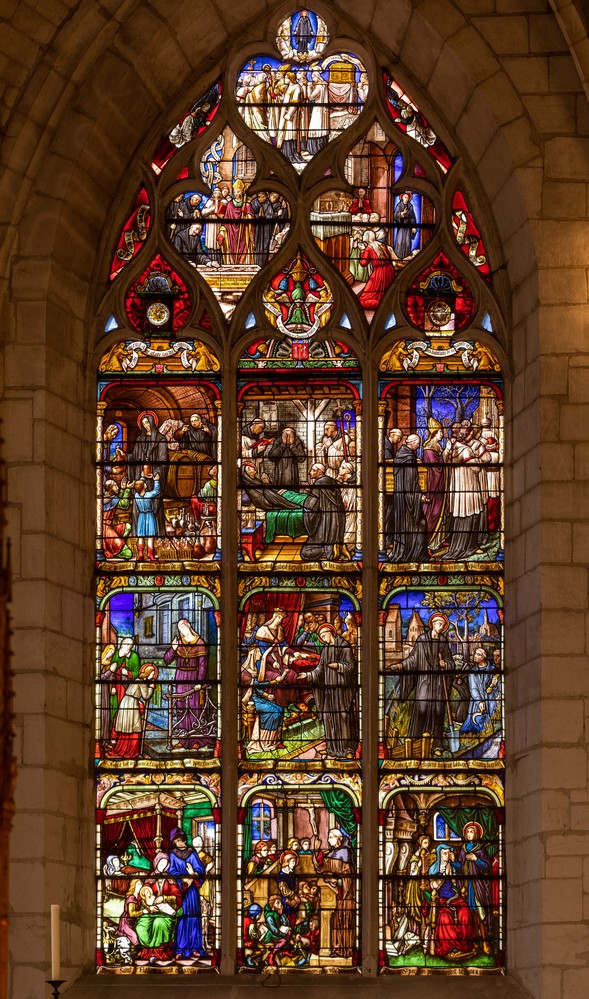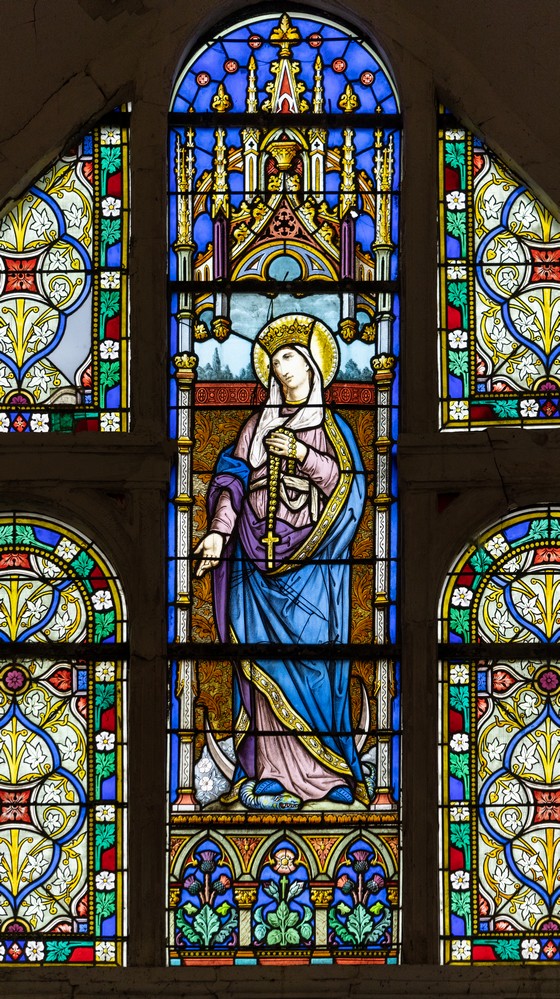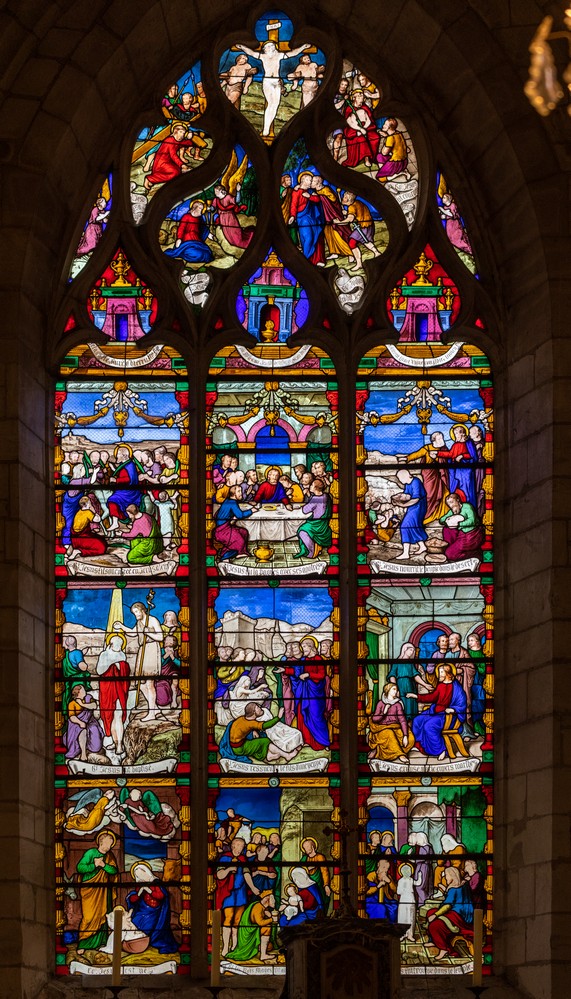Summary of the previous episode:
Spared by the wars, the Aube department has managed to preserve a civil and religious, public and private, ancient and contemporary glassmaking heritage that is unique in Europe.
First, there is the litany of saints, some with curious names: Saint Tanche, Saint Maclou, Saint Loup, Saint Aventin, Saint Pantaléon…
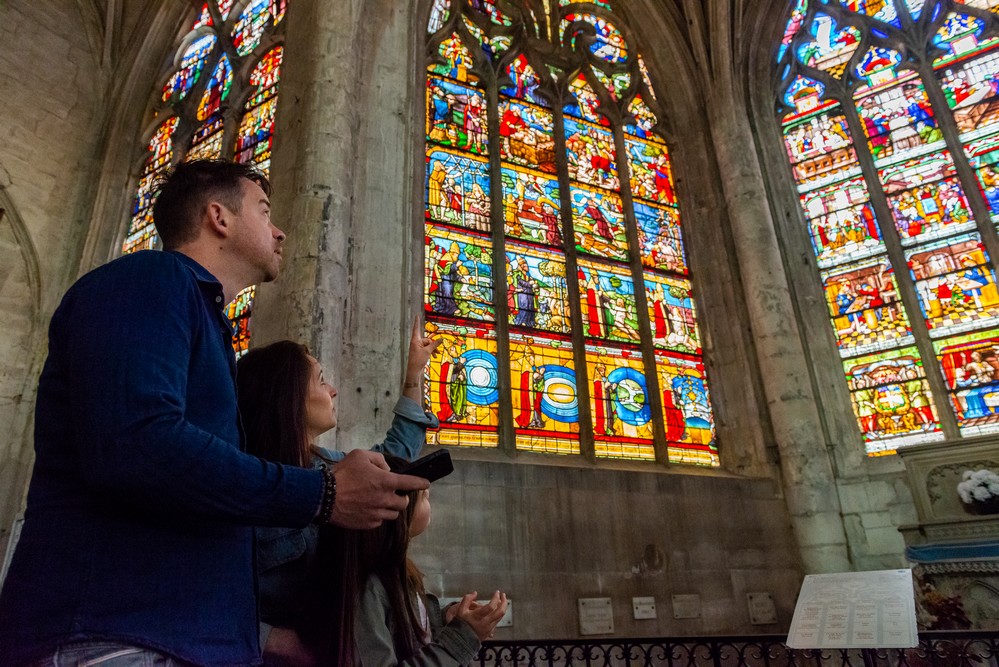
What they have in common is that they patronise religious buildings, all of which contain remarkable stained-glass windows.
From the most modest country churches to the proudest of the great “naves” in Troyes, these places of worship have earned a place on the Stained Glass Route for the splendour of their stained-glass windows.
A map and an app
The Stained Glass Route offers an anthology of the Aube department’s rich glassmaking heritage, with 65 jewels along the way taking visitors to the four cardinal points of the department. The Troyes La Champagne area alone is represented by 10 communes and 24 different sites.
![]()
Eglise Saint-André de Saint-André-les-Vergers © Studio OG ![]()
Eglise de Sainte-Maure – © Studio OG ![]()
Eglise Saint-André de Saint-André-les-Vergers © Studio OG
The tour is available both on paper and on a dedicated web application, written in French and English. Each stop is presented in a short video with text and photos. The content is accessible to people with visual or hearing impairments.
The 65 stops have been selected for their historical, technical and aesthetic interest, but also for the state of conservation of the works on display and, of course, their accessibility to the public.
In all shades
The tour features a wide range of contemporary glassworks, as well as civil heritage buildings, particularly in and around Troyes, where you will be surprised to see the doors of a bank, a shopping centre, a tax office and even an underground car park!
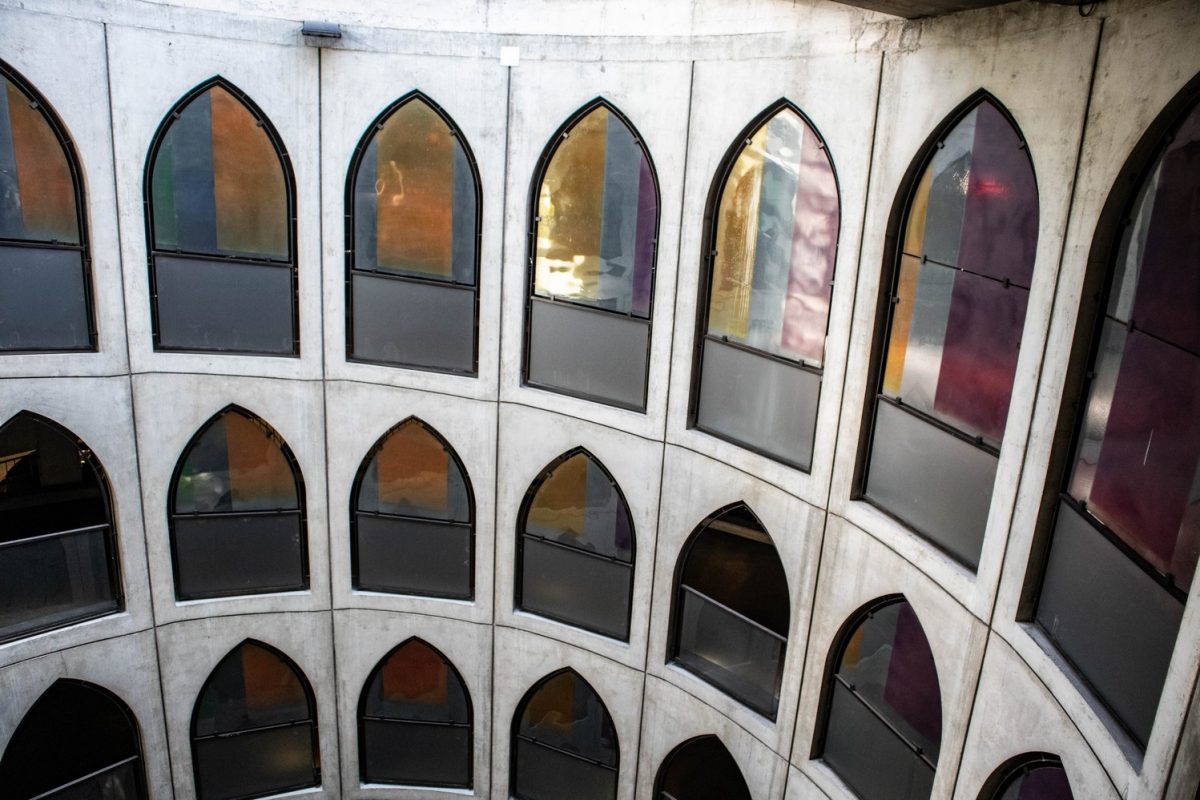
It is hard to single out one building over another, as each rivals in beauty and adds a different touch to the vast, colourful sample of stained glass present in Troyes and the Aube department.
However, it is to be noticed that the church of Sainte-Madeleine in Troyes, with its flamboyantly coloured windows, contrasts violently with the subdued glasswork of its sister church in Troyes, the church of Saint-Pantaléon. The church of Saint-Martin in Romilly-sur-Seine has resolutely contemporary and very colourful windows while the church of Saint-Pierre-lès-Liens in Ervy-le-Châtel boldly combines modern and classical stained glass…
The town of Ervy-le-Châtel opened its own “Maison du Vitrail d’Armance” (“House of the Stained-Glass windows of Armance”), at the same time as the “Cité du Vitrail” was being created in Troyes.
Therefore, stained glass is well and truly a modern art form, as you will understand in the next episode.

